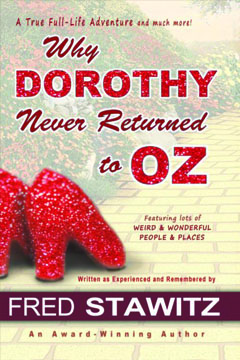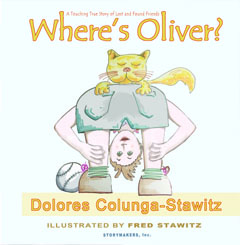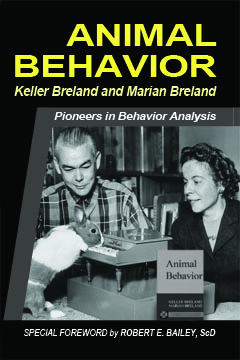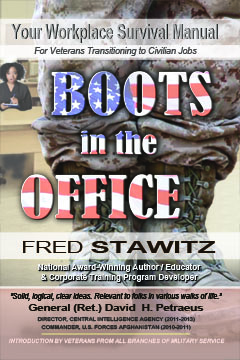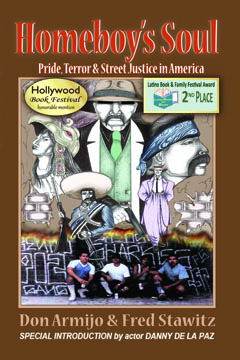
![]()
Available at Amazon.com and at all major book venues globally in softcover and eBook formats.
Click HERE!
![]()
GALLERY
To veiw a slide show of images
relevant to this book
Click HERE!
![]()
REVIEWS
![]()
"A must-have text for animal behavior students. Lots of pictures are included, which I always enjoy, and the stories of the two most influential pioneers in animal behavioral studies are captivating. A great book."
ERIN - posted on Amazon.com
![]()
"Fabulous book. A must have for any animal trainer."
ROSS TARTAN - posted on Amazon.com
![]()
"Must read."
WCR - posted on Amazon.com
![]()
BOOK DETAILS
ISBN: 9780988807921
PUBLISHER: Storymakers, Inc.
PUBLICATION DATE: August 27, 2018
PAGE COUNT: 352
FORMAT: softcover, hardcover, ebook
![]()

![]()
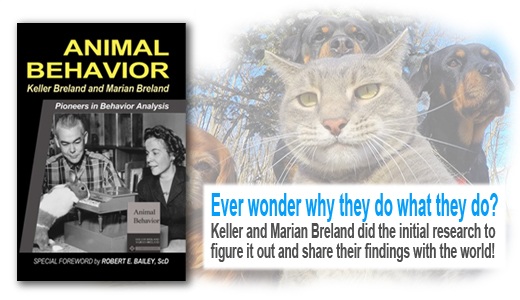
Animal Behavior
All effective modern animal training has a common basis: the discovery of "operant conditioning" by B.F. Skinner. Assisting in this research were Keller & Marian Breland, graduate students of Skinner who continued to develop the science into a systematic method for training animals. They documented their work in the seminal text, Animal Behavior, first published in 1966 but out of print for decades. This historic book brought the Brelands' research to the world.
In 2018, Animal Behavior was republished by Storymakers, Inc. with a slate of historic photographs and a Special Introduction by Dr. Robert E. Bailey, ScD.–esteemed colleague of the Brelands and first Director of Training for the U.S. Navy Marine Mammal Training Program. Dr. Bailey’s introduction provides historic context for the contribution of the Brelands' work to behavior science.
TABLE OF CONTENTS
New Foreward, by Robert E. Bailey, Sc.D.
New Introduction, by Robert E. Bailey, Sc.D.
Foreward, by Melvin. H. Marx
Preface, by Marian Breland
PART ONE: Inquiry and Argument
I. A Backward Look at the Study of Animal Behavior
II. The Basic Nature of Animal Behavior
III. Interpreting Experiments
IV. Observational Data on Animal Species
V. Where Do We Go from Here?
PART TWO: Historic Photographs
PART THREE: The Selected Readings
Bibliography
Index
HISTORIC PHOTOGRAPHS
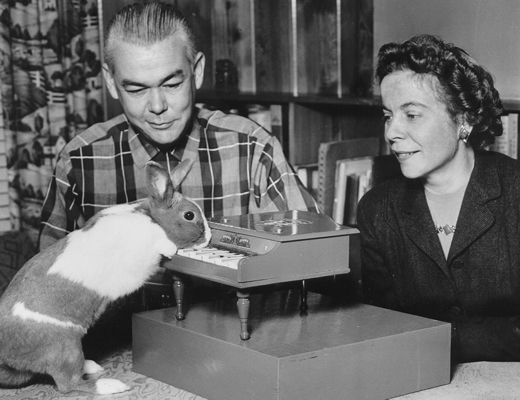
Keller and Marian Breland
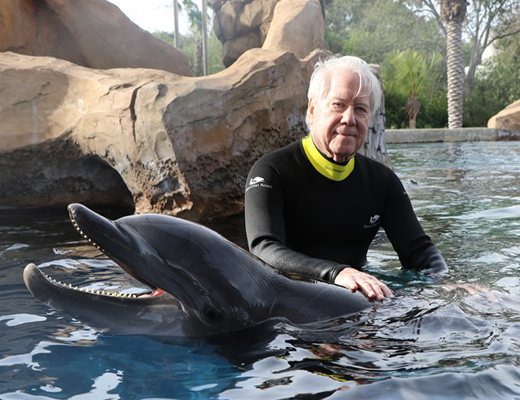
Robert E. Bailey, Sc.D.
ABOUT THE AUTHORS
Keller Breland was born and raised in Mississippi, attended Louisiana State University as an undergraduate, and began working in B. F. Skinner's psychology laboratory at the University of Minnesota in the late 1930s. There he met and worked with Marian Kruse, an undergraduate majoring in psychology and ancient Greek. Together, Keller and Marian helped Skinner develop many key concepts and demonstrations in operant psychology, which is the study of behavior that is influenced by rewards. The Brelands were married in 1941, the same year that the U.S. entered World War II. It was also in 1941 that Skinner received funding from General Mills, Inc., to set up the Project Pigeon program, a top-secret effort to teach pigeons to guide bombs dropped from airplanes.
It was experiences like these that led the Brelands to appreciate the great power of positive reinforcement as well as the specific procedures (like shaping) and the technology (e.g., the automatic feeder) that made operant psychology so workable. With great optimism, Keller and Marian bought a small farm in nearby Mound, Minnesota, to begin the business that eventually became Animal Behavior Enterprises.
In 1946, Keller and Marian developed a "chicken show" for the farm-feed division of General Mills, Larro Feed. For many years, these shows were great hits at local feed stores throughout the United States. The Larro salesman would provide the reinforcement for chickens that danced, found hidden objects, laid wooden eggs, and played the piano. The shows were the first commercial applications of the new behavioral technology called operant conditioning.
In the early 1960s, the U.S. Navy Marine-Mammal program began operation at Point Mugu, California. The Brelands were invited to train the staff working with marine mammals like dolphins and sea lions. Not surprisingly, the Brelands first taught the staff all about animal training by having the staff work with chickens. At this time, Keller's most enthusiastic student was the director of training at point Mugu, Robert (Bob) Bailey. Later, Keller helped the staff at Point Mugu determine appropriate tasks and reinforcement contingencies for the marine animals in a variety of intriguing situations.
Keller was a man overflowing with ideas and enthusiasm. Tragically, he died in 1965 from heart disease. His wife Marian carried on the tradition for the next 36 years. In 1966, a year after Keller's death, the textbook, Animal Behavior, by Keller and Marian Breland, was published by Macmillan. Marian married Bob Bailey in 1976. (https://www3.uca.edu/iqzoo/History/keller_breland_biography.htm)
Copyright 2014-2025 StoryMakers, Inc. - All rights reserved.
Send comments or questions regarding this web site to Webmaster@storyMakersInc.com.



